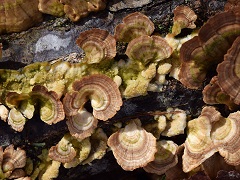Features
Genetically engineered fungus now squeezes out more biofuel from farm waste
Date: 2018-02-06 15:08:41.0
Author: DBT-ICGEB
Researchers at the International Centre for Genetic Engineering and Biotechnology (ICGEB) have altered the genome of a commercially-exploited fungus in such a way that it would increase the production of enzymes helpful in converting cellulose into simple fermentable sugars.
The significance of the work lies in the fact that it would help produce double the amount of biofuel from agricultural waste materials, including rice and wheat straw, whose burning was implicated in the worsening of air quality in most parts of northern India. Available estimates show that India produces around 500 million tonnes of agricultural waste annually.
The ICGEB scientists led by Syed Shams Yazdani disrupted a control mechanism found in the fungus penicillium funiculosum (PF) that regulates its metabolic activity. Disrupting this mechanism called carbon catabolite repression helped the scientists to increase the production of enzymes that are involved in converting cellulose into sugars and, thus increased the production of biofuels. The ICGEB scientists published their work in the journal Biotechnology for Biofuels last week.
The newly-engineered fungus could be a strong alternative in the industrial enzyme repertoire used for biofuel production,” said Yazdani. More importantly, it can use any type agricultural waste as feedstock, he said.
“We have not only found a way to double the quantity of enzymes available, but also improved their quality, leading to increased biofuel production,” Yazdani told BusinessLine.
Around 80 per cent of dry biomass – including that of crop residues – contain cellulose and hemocellulose. “Processes currently used for biological conversion of cellulosic biomass are capable of converting only 60-65 per cent of cellulose material into sugars. Our process could enhance the recovery to 80-85 per cent,” the ICGEB scientist said.
The scientists, funded by a research grant from the Department of Biotechnology, have been working the PF fungus since 2009. They opted for this fungus as it was found to produce five times more active enzyme (known as CBH1) in breaking down cellulose as compared to its fungal cousin Trichoderma reesei, more commonly used in industrial enzyme cocktails. In this work, the ICGEB scientists went a step further and tweaked the PF fungal genome in such a way that the enzyme production can be doubled.
About DBT-ICGEB
DBT-ICGEB Advanced Bioenergy Research (DBT-ICGEB) is an integrated centre for performing cutting-edge basic research and its translation into reality. It thrives upon ICGEB mandate to perform research in the field of molecular biology and biotechnology and will serve as platform for the synthetic biologists to work in diverese bioenergy areas such as microbial engineering, biochemical engineering, algal engineering and systems biology.y.
For further information about DBT-ICGEB Advanced Bioenergy Research, please visit their website here.
Displaying 2 keywords used to tag this article:
- Replica Rado Watches
- Replica Collection L2.643.4.73.4 Lo

